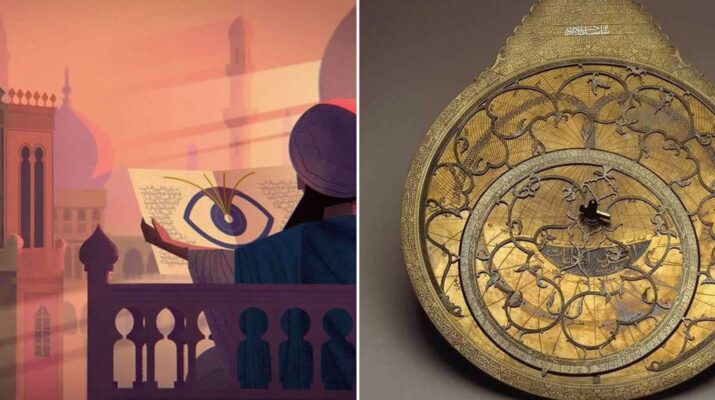The Islamic Golden Age (8th to 13th),saw flourishing science, economics, and culture under various caliphates. Initiated by Harun al-Rashid, the House of Wisdom in Baghdad became a hub for scholars translating global knowledge into Arabic. It ended in 1258 (Mongol Sack of Baghdad) or 1492 (Christian Reconquista)
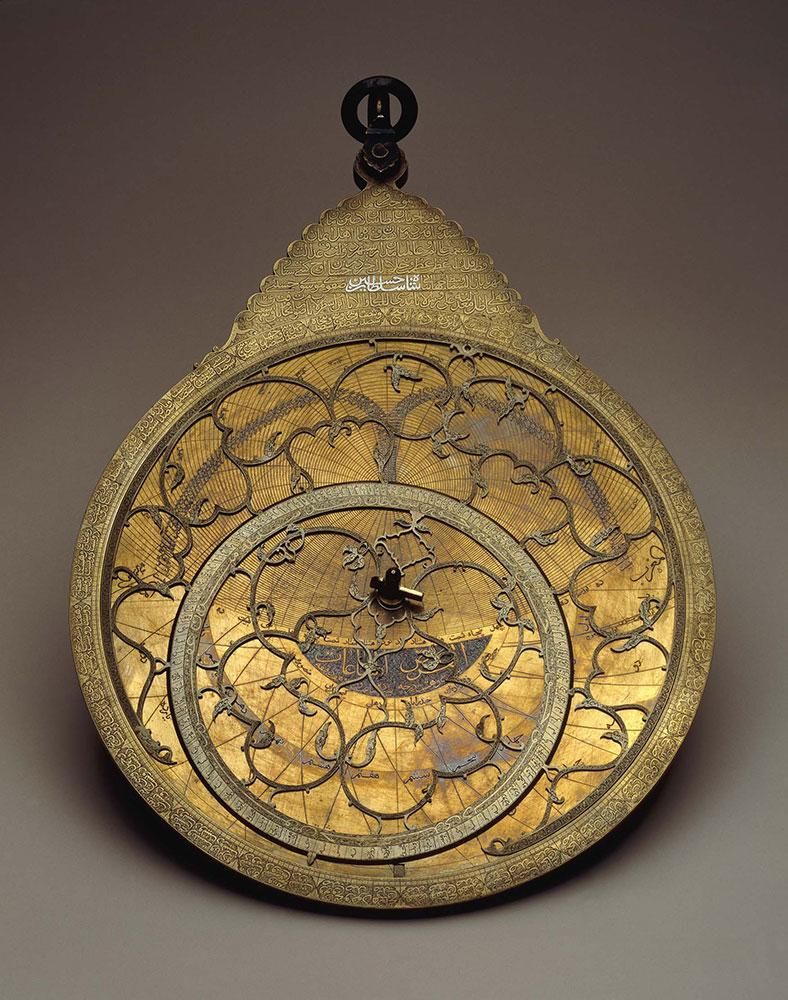
Get ready for a sensational journey through time and space because Muslim scientists were true visionaries who shaped the world!
Did you know that many stars carry Arabic names because they were discovered by Arabs? Ancient astronomy in Arabia was quite scientific and precise. The ancient astronomers named many of the stars and as time passed these names were used on sky maps and navigation charts. They still are used today just as the constellations even though the origin is not modern.
“For this field, the most credit goes to Al-Battani and Al-Biruni.”
Al-Battani
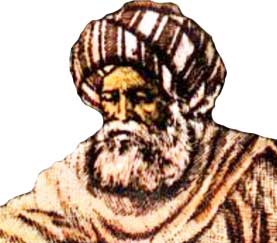 Al-Battani was born around 858 C.E .He known as the ‘Ptolemy of Arabs,’ was a mathematician, astronomer, and astrologer born around 858 near Haran, Syria. His book, Kitāb az-Zīj, introduced significant trigonometric relations (sine, cosine, tangent), shaping modern astronomy. He cataloged 489 stars, calculated the solar year (365 days, 5 hours, 46 minutes, 24 seconds) with 99% accuracy, and refined Ptolemy’s work on the sun’s farthest point.
Al-Battani was born around 858 C.E .He known as the ‘Ptolemy of Arabs,’ was a mathematician, astronomer, and astrologer born around 858 near Haran, Syria. His book, Kitāb az-Zīj, introduced significant trigonometric relations (sine, cosine, tangent), shaping modern astronomy. He cataloged 489 stars, calculated the solar year (365 days, 5 hours, 46 minutes, 24 seconds) with 99% accuracy, and refined Ptolemy’s work on the sun’s farthest point.
Al-Battani pioneered the determination of the solar year and changes in seasons, identified new stars, and confirmed Ptolemy’s findings. He accurately calculated the solar year as 365 days with an additional 5 hours and 45 minutes, aligning with modern science.
Al-Biruni
 Al-Biruni,not only studied the stars but also knew where America was before many others even thought of discovering the New World. Although he claimed the existence of America in the early 11th century, he himself never saw the continent. His unparalleled knowledge of geography and cartography led him to the conclusion that the world they knew then, stretching from the western coast of Europe and Africa to the eastern coast of Asia, actually constitutes only two-fifths of the total surface area of the world.
Al-Biruni,not only studied the stars but also knew where America was before many others even thought of discovering the New World. Although he claimed the existence of America in the early 11th century, he himself never saw the continent. His unparalleled knowledge of geography and cartography led him to the conclusion that the world they knew then, stretching from the western coast of Europe and Africa to the eastern coast of Asia, actually constitutes only two-fifths of the total surface area of the world.
Αl-Biruni was an astronomer, mathematician and philosopher, studying physics and natural sciences too. He was the first able to obtain a simple formula for measuring the Earth’s radius. While Europe was in the grip of the ‘Dark Ages’ of the Middle Ages.… al-Biruni, as a forerunner of the Renaissance, was far in advance of the scientific thought then obtaining in Europe.
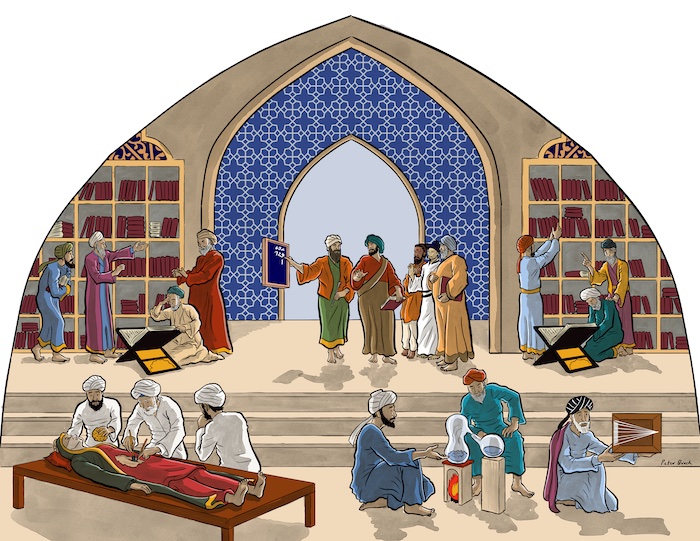
Did you know that words like “camera,” “algorithm,” and “algebra” owe their existence to the brilliance of Arab minds? They not only illuminated the Golden Age of Islamic civilization but also laid the foundations for the modern technology we use today. Arab scholars were not just astronomers; they were adventurers too!
Muhammad ibn Musa al-Khwarizmi
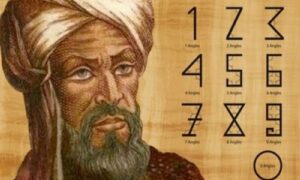 It was a 9th-century Muslim genius, mathematician, geographer & astronomer, Abu Abdallah Muhammad ibn Musa Al-Khwarizmi – also known as the Father of Algebra. Al-Khwarizmi’s most significant contribution to mathematics was the development of algebra. His book, “Kitab al-Jabr wal-Muqabala” (The Compendious Book on Calculation by Completion and Balancing), introduced systematic methods for solving linear and quadratic equations.
It was a 9th-century Muslim genius, mathematician, geographer & astronomer, Abu Abdallah Muhammad ibn Musa Al-Khwarizmi – also known as the Father of Algebra. Al-Khwarizmi’s most significant contribution to mathematics was the development of algebra. His book, “Kitab al-Jabr wal-Muqabala” (The Compendious Book on Calculation by Completion and Balancing), introduced systematic methods for solving linear and quadratic equations.
The title “Kitab al-Jabr wal-Muqabala” is from Al-Khwarizmi’s most famous work, serving as the foundation for the term “algebra.” This work laid the groundwork for algebraic methods and techniques in solving equations.
By introducing zero into the Indian positional system of nine digits, Al-Khwarizmi established the basis for the decimal system and the transition from Roman to Arabic numerals, a pivotal development in mathematics. Interestingly, the term “algorithm” is derived from his Latinized name, Algorismi, directly connecting it to his contributions.
Facts:
- The Soviet Union issued a stamp in 1983 on which image of Al\ Khwarizmi was engraved.
- The Amir Kabir University of Tehran i Iran has placed the statue of Al-Khwarizmi.
If you find robotics fascinating, thank Al-Jazari! This genius from the Golden Age of Islamic civilization not only discovered robotics but also laid the groundwork for automation that would later shape our everyday lives with his mechanical wonders.
Al-Jazari

Ismail Al-Jazari was a polymath: a scholar, inventor, mechanical engineer, artisan, artist and mathematician.’The Book of Knowledge of Ingenious Mechanical Devices’ is a medieval Arabic book written by Ismail al-Jazari in the 12th century. It describes over fifty mechanical devices and automata, including clocks, water-raising machines, musical automatons, and humanoid robots. Al-Jazari provides detailed instructions for constructing each device and includes anecdotes and historical references. The book had a significant influence on the development of European clockmaking and automata, and it offers insights into daily life and technological innovations in the Islamic world during the medieval period. It’s his book that influenced key concepts of modern day robotics.
Ismail al Jazari has been credited for having invented devices that were precursors to today’s robots.
Imagine a device that can do everything: Give you the time, your location, your horoscope, and even help you make decisions—all with the swipe of a hand. It’s overpriced, customizable and comes with a variety of bells and whistles. No, this isn’t the iPhone 7. It’s the astrolabe, a remarkably versatile tool that was used for centuries in European and Islamic cultures before being quietly overshadowed by newer technologies.
“The most significant individuals who constructed astrolabes are: Al-Farghani and Al-Ijliya Al-Astrulabi”
Al-Farghani

Al-Farghani (c. 820-after 861). An astronomer-astrologist he also supervised the building of a canal (the Great Nilometer) at Cairo. Legend has it that he made the canal too high at one end preventing water flow. He wrote about sundials, astronomy, the astrolabe, and commentaries on Ptolemy, but most of his writings are now lost. His surviving astronomical work, Elements, was translated into Latin twice, and was very popular.
Al-Ijliya Al-Astrulabi
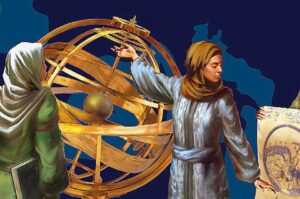
The making of astrolabes, a branch of applied science of great status, was practiced by many include one woman from Aleppo (Syria), Mariam* “Al-Astrolabiya” Al-Ijliya (Al-‘Ijliyah bint al-‘Ijli al-Asturlabi), who followed her father’s profession and was employed at the court of Sayf al-Dawlah (333 H/944 CE-357/967), one of the powerful Hamdanid rulers in northern Syria who guarded the frontier with the Byzantine empire in the tenth century CE.
Ibn Haytham: The man behind the camera
 Ibn Haytham was famous for possessing great influence in the fields of celestial physics, astronomy, optics and the science of perspective. (History of Islamic Philosophy, Henry Corbin)
Ibn Haytham was famous for possessing great influence in the fields of celestial physics, astronomy, optics and the science of perspective. (History of Islamic Philosophy, Henry Corbin)
In fact, this Muslim scientist was the first to explain the science behind our vision and explained, through his research, that vision occurs when light reflects from an object and then passes to one’s eyes. (Philosophy in the Islamic World, Peter Adamson)
Ibn al-Haytham (c. 965 – c. 1040) was the first to explain that vision occurs when light reflects off an object and passes to the eyes. This Muslim scientist, with significant influence in celestial physics, astronomy, optics, and perspective, pioneered the study of the science of vision.
His research, based on the camera obscura, a dark chamber, inspired and influenced great philosophers like Aristotle, Leonardo da Vinci and Al Kindi. This technique uses a dark room or a small box with an opening for light, allowing it to travel in straight lines. Ibn Haytham’s contribution to this field played a crucial role in advancing our understanding of vision, influencing subsequent researchers and leaving a legacy that extends to the modern era of cameras, including those on smartphones that we use daily to capture moments.
Ibn Sina (ca. 970–1037) Avicenna was a famous physician, astronomer, philosopher, and thinker of the Golden Era of Muslims. He is very famous due to his work on medicines and cures of various diseases. wrote one of the most useful and famous books on medicine, called Al-Qanun Fi At-Tibb (meaning: the Canon of Medicine). His books on medicines were used to teaching students from the 11th century to the 17th century. Due to this reason, he is also referred to as the father of modern medicine.
In the field of medicine, the greatest contributions have come from the authoring of medical works and the invention of surgical instruments by: Ibn Sina, Zakariyya al-Razi and Al-Zahrawi.
Ibn Sina – Avicena

Ibn Sina (ca. 970–1037) Avicenna was a famous physician, astronomer, philosopher, and thinker of the Golden Era of Muslims. He is very famous due to his work on medicines and cures of various diseases. wrote one of the most useful and famous books on medicine, called Al-Qanun Fi At-Tibb (meaning: the Canon of Medicine). His books on medicines were used to teaching students from the 11th century to the 17th century. Due to this reason, he is also referred to as the father of modern medicine.
Al-Zahrawi –The father of modern surgery
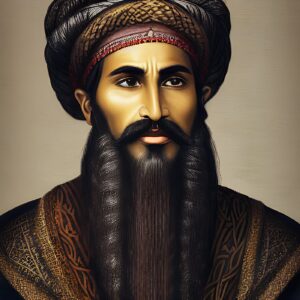
 Al-Zahwari (Albucasis) ( 936 AD 1013 AD) was a scholar, chemist and surgical genius. His treatise Kitab al Tasrif, The Method of Medicine, was a revolutionary 30-volume encyclopedia of medical knowledge.Al-Zahrawi illustrated pictures of each tool used in different operations to describe how to carry out each therapy process. More than 200 surgical tools were invented by Al-Zahrawi – a staggering achievement – and illustrated in the book, including a variety of scalpels, retractors, curettes, pincers, and specula as well as tools for his preferred cauterization and ligature techniques, and hooks with a double tip for use in surgery. His use of catgut for internal stitching is still practised in modern surgery – it appears to be the only natural substance capable of dissolving and is tolerated by our bodies.
Al-Zahwari (Albucasis) ( 936 AD 1013 AD) was a scholar, chemist and surgical genius. His treatise Kitab al Tasrif, The Method of Medicine, was a revolutionary 30-volume encyclopedia of medical knowledge.Al-Zahrawi illustrated pictures of each tool used in different operations to describe how to carry out each therapy process. More than 200 surgical tools were invented by Al-Zahrawi – a staggering achievement – and illustrated in the book, including a variety of scalpels, retractors, curettes, pincers, and specula as well as tools for his preferred cauterization and ligature techniques, and hooks with a double tip for use in surgery. His use of catgut for internal stitching is still practised in modern surgery – it appears to be the only natural substance capable of dissolving and is tolerated by our bodies.
Zakariyya al-Razi
 Al Razi was quite generous and charitable for his patients, treating them in a quite humane manner, giving them treatment without charging them. In his latter years, he had cataract in both eyes and became blind. He died in Al Rayy on October 27, 925 at the age of 60 years. He wrote more than 224 books on various subjects. His most important work is the medical encyclopedia known as Al-Hawi fi al-Tibb, known in Europe as Liber Continens. His books in medicine, philosophy and alchemy had greatly effected the human civilization, especially in Europe.1 Some authors considered him the greatest Arabic-Islamic physician and one of the most famous known to humanity.
Al Razi was quite generous and charitable for his patients, treating them in a quite humane manner, giving them treatment without charging them. In his latter years, he had cataract in both eyes and became blind. He died in Al Rayy on October 27, 925 at the age of 60 years. He wrote more than 224 books on various subjects. His most important work is the medical encyclopedia known as Al-Hawi fi al-Tibb, known in Europe as Liber Continens. His books in medicine, philosophy and alchemy had greatly effected the human civilization, especially in Europe.1 Some authors considered him the greatest Arabic-Islamic physician and one of the most famous known to humanity.
Scientists of the Islamic era engaged in multidisciplinary sciences, including physics, chemistry, mathematics, and astronomy. Some wrote poetry, while others excelled in philosophy and economics.
Jabir ibn Hayyan (Geber)
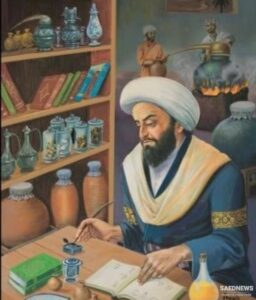 Jabir ibn Hayyan (721–815 AD) is one of the most brilliant and intelligent scientists in the Golden Era of Muslims. He is famous for inventing various instruments for chemistry experiments, and he also performed many chemistry experiments himself. He found many new chemicals which include hydrochloric acid. Due to a lot of work in the field of chemistry, he is considered to be the founder of chemistry in the modern world. Jabir developed more than 20 kinds of chemistry lab equipment; most of them are also used today in the laboratories. Some of the lab equipment that he made are retort and Alembic. He developed a method of purifying substances by the process of crystallization.
Jabir ibn Hayyan (721–815 AD) is one of the most brilliant and intelligent scientists in the Golden Era of Muslims. He is famous for inventing various instruments for chemistry experiments, and he also performed many chemistry experiments himself. He found many new chemicals which include hydrochloric acid. Due to a lot of work in the field of chemistry, he is considered to be the founder of chemistry in the modern world. Jabir developed more than 20 kinds of chemistry lab equipment; most of them are also used today in the laboratories. Some of the lab equipment that he made are retort and Alembic. He developed a method of purifying substances by the process of crystallization.
Al-Kindi
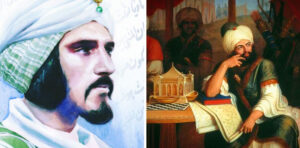 Al-Kindi died in Baghdad, Iraq, in 873 A.D. Al-Kindi is often called the “father or Arab and Islamic philosophy.” This may be true and it is also necessary to mention he was a very accomplished mathematician and astronomer. The philosophy that he promoted has its origins in the world of ancient Greece. Al-Kindi continued the grand tradition of ancient Greek thinkers into his culture.Al-Kindi was not a man who was skilled solely in one area of learning or thought. He would gain great acclaim as a philosopher and his work was reflected in well over 250 books that he had written. Twelve of his books dealt with physics and 32 books dealt with geometry. Other books covered topics of medicine, philosophy, and logic.
Al-Kindi died in Baghdad, Iraq, in 873 A.D. Al-Kindi is often called the “father or Arab and Islamic philosophy.” This may be true and it is also necessary to mention he was a very accomplished mathematician and astronomer. The philosophy that he promoted has its origins in the world of ancient Greece. Al-Kindi continued the grand tradition of ancient Greek thinkers into his culture.Al-Kindi was not a man who was skilled solely in one area of learning or thought. He would gain great acclaim as a philosopher and his work was reflected in well over 250 books that he had written. Twelve of his books dealt with physics and 32 books dealt with geometry. Other books covered topics of medicine, philosophy, and logic.
Ibn Khaldun
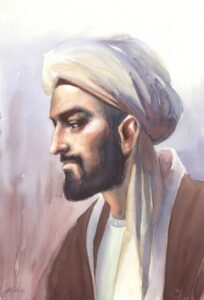
Ibn Khaldun (1332 – 1406) was a statesman, diplomat, scholar, sociologist and judge. His masterpiece Muqaddimah “Introduction” also bears testimony to his skills in some other fields such as economy and poetry too. He is not only considered a philosopher of history but also the first one. Ibn Khaldun defined civilization as a “corporate social actor,” turning it into an individual discipline, and studied the behavior and reactions of civilizations under different circumstances. His economic opinions, apparently the most advanced of those expressed in medieval Islam, are to be found principally in The Muqaddimah, originally intended as an introduction to his history (Kitāb al-‘Ibar) of the Arab and Muslim world and its pre-Islamic antecedents. The Muqaddimah, initially completed in 1377, continued to be corrected or added to until shortly before the author’s death.
Ibn Rushd
 Ibn Rushd, also known by his Latinized name Averroës ( 1126–1198), was an Al-Andalus a master of Aristotelian philosophy, Islamic philosophy, Islamic theology, Maliki law and jurisprudence, logic, psychology, politics, Andalusian classical music theory, medicine, astronomy, geography, mathematics, physics, and celestial mechanics. The 13th-century philosophical movement based on Averroes’ work is called Averroism. Ibn Rushd has been described as the “founding father of secular thought in Western Europe.” He tried to reconcile Aristotle’s system of thought with Islam. According to him, there is no conflict between religion and philosophy; rather they are different ways of reaching the same truth. He believed in the eternity of the universe. Ibn Ruhd also held that the soul is divided into two parts, one individual and one divine; while the individual soul is not eternal, all humans at the basic level share one and the same divine soul.
Ibn Rushd, also known by his Latinized name Averroës ( 1126–1198), was an Al-Andalus a master of Aristotelian philosophy, Islamic philosophy, Islamic theology, Maliki law and jurisprudence, logic, psychology, politics, Andalusian classical music theory, medicine, astronomy, geography, mathematics, physics, and celestial mechanics. The 13th-century philosophical movement based on Averroes’ work is called Averroism. Ibn Rushd has been described as the “founding father of secular thought in Western Europe.” He tried to reconcile Aristotle’s system of thought with Islam. According to him, there is no conflict between religion and philosophy; rather they are different ways of reaching the same truth. He believed in the eternity of the universe. Ibn Ruhd also held that the soul is divided into two parts, one individual and one divine; while the individual soul is not eternal, all humans at the basic level share one and the same divine soul.
Who was al-Farabi: Muslim philosopher and musical theorist
 Abu Nasr al-Farabi’s was born somewhere in central Asia around 878 CE . Farabi is most widely known for his commentaries on Aristotle and Plato’s works, which he published in his book, Philosophy of Plato and Aristotle. The book includes summaries and interpretations of their works and goes into topics such as the origins of philosophy. Farabi was one of the first scholars of music to study the music of the Turkic people and one of the earliest to systematise the study of music with a system of common notations and rules to write down compositions and rhythms.
Abu Nasr al-Farabi’s was born somewhere in central Asia around 878 CE . Farabi is most widely known for his commentaries on Aristotle and Plato’s works, which he published in his book, Philosophy of Plato and Aristotle. The book includes summaries and interpretations of their works and goes into topics such as the origins of philosophy. Farabi was one of the first scholars of music to study the music of the Turkic people and one of the earliest to systematise the study of music with a system of common notations and rules to write down compositions and rhythms.
According to Farabi, the music of a particular culture allowed an academic to learn more about different peoples, as their particular nature and characteristics had an impact on their musical tastes.
Farabi died at the age of 80 in Damascus but his legacy inspired Muslim and Western scholars for centuries to come.
Abbas Ibn Firnas – the First Man to Fly and Live to Tell the Tale
 Abbas Ibn Firnas (809/810 – 887 A.D.), In the context of aerospace, Abbas Ibn Firnas is an extraordinary reference point as the creator of the precursor to the parachute and for being the first person to successfully design, build and test artefacts that remained in flight. He did this six hundred years before Leonardo da Vinci developed his designs for flying machines, and more than a thousand years before the Wright brothers made their famous flight.
Abbas Ibn Firnas (809/810 – 887 A.D.), In the context of aerospace, Abbas Ibn Firnas is an extraordinary reference point as the creator of the precursor to the parachute and for being the first person to successfully design, build and test artefacts that remained in flight. He did this six hundred years before Leonardo da Vinci developed his designs for flying machines, and more than a thousand years before the Wright brothers made their famous flight.
Years later, in 875, he designed a glider made of wood and silk (decorated with feathers from several different birds), and he launched himself with it from the La Arruzafa hills, near Cordoba. He was so sure that his invention would work that he had convened hundreds of people to watch along the route. Also present were many members of the court of Muhammad I, Emir of the Andalusi caliphate. The result was a sustained flight using air currents, which lasted anything between two and ten minutes (depending on the historical accounts used as reference). Despite a difficult landing, he not only survived but also became the first man to fly with a heavier-than-air machine.
Even using the most pessimistic figures for his flight, it was much longer in both time and distance to that achieved in 1903 by the Wright brothers.
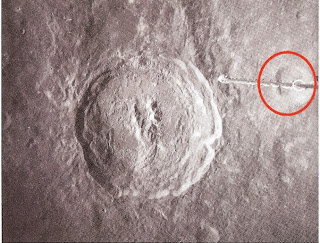
Fatima al-Fihri
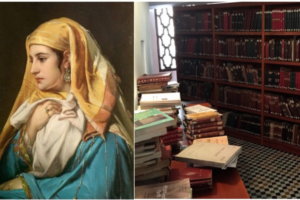 Fatima al-Fihri played a great role in the civilisation and culture in her community. . Scholars believe Fatima died sometime around 880 AD. We technically don’t know enough about her life to get a sense of her personality, but scholars believe that we can imagine, based on the legacy she left to humankind. Glacier writes that “one can sense some of her personal qualities, among which were probably generosity, intelligence, and clairvoyance.”
Fatima al-Fihri played a great role in the civilisation and culture in her community. . Scholars believe Fatima died sometime around 880 AD. We technically don’t know enough about her life to get a sense of her personality, but scholars believe that we can imagine, based on the legacy she left to humankind. Glacier writes that “one can sense some of her personal qualities, among which were probably generosity, intelligence, and clairvoyance.”
Fatima laid the foundation of universities as we know them today, thereby playing an integral part in the development of higher education. Today, the school is still in operation and offers undergraduate, graduate, and doctoral programs, and this is all owed to the forward-thinking vision of one young woman.
The Golden Age of Islamic civilization is characterized not only by richness in the fields of science, mathematics, and art but also by the harmonious integration of science and religion. The development of science was encouraged and directed by the Quranic verse “Ikre!” (Read!), contributing to the creation of an environment where research and knowledge were considered morally upright and spiritual duties. This synthesis between religion and science contributed to fruitful creativity during that period.
“Prepared by Aziza M.”
Napomena o autorskim pravima: Dozvoljeno preuzimanje sadržaja isključivo uz navođenje linka prema stranici našeg portala sa koje je sadržaj preuzet. Stavovi izraženi u ovom tekstu autorovi su i ne odražavaju nužno uredničku politiku The Balkantimes Press.
Copyright Notice: It is allowed to download the content only by providing a link to the page of our portal from which the content was downloaded. The views expressed in this text are those of the authors and do not necessarily reflect the editorial policies of The Balkantimes Press.

